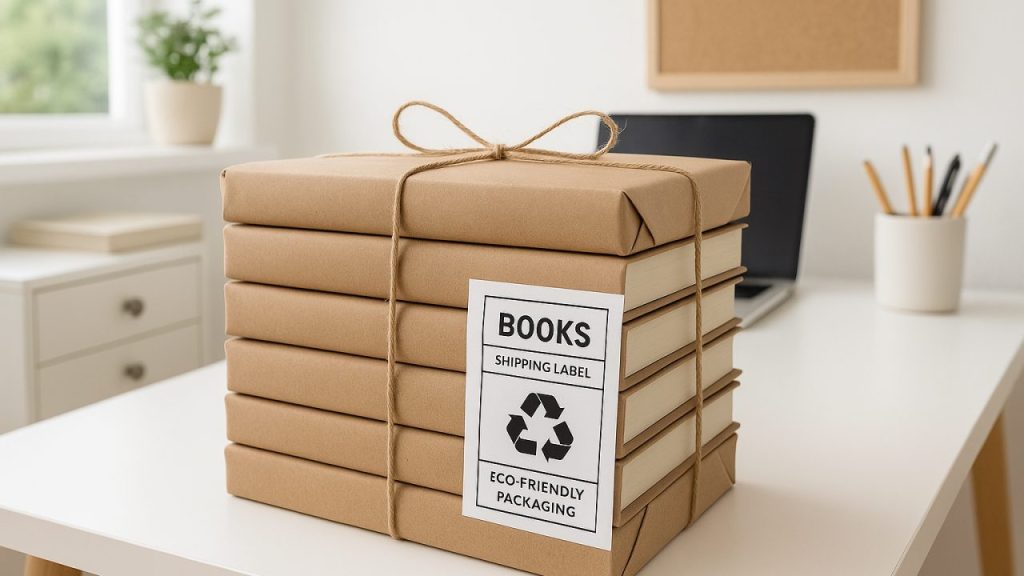
⏱️ Estimated reading time: 7 minutes
- Intro Hook: Why Proper Storage and Shipping Matter for Printed Books
- Tip 1: Keep Books in a Cool, Dry Place
- Tip 2: Use Protective Packaging for Shipping
- Tip 3: Avoid Overpacking and Excess Pressure
- Tip 4: Label and Handle Shipments Clearly
- Tip 5: Consider Environmental Factors in Transit
- Short Case Example: A Local Author’s Success with Newstyle Print
- Conclusion: Keep Your Printed Books Looking Their Best
- FAQ
Intro Hook: Why Proper Storage and Shipping Matter for Printed Books
Whether you’re a self-published author, a small publisher, or a business using booklets as part of your marketing efforts, ensuring your printed books remain in top shape during storage and shipping is more important than many realise. Unexpectedly, factors like humidity, pressure, or simply packaging choices can subtly damage your books, altering their appearance and feel, which then reflects on your brand’s reputation and the customer’s experience.
In this guide, we’ll share straightforward, practical advice for storing and shipping your printed books with confidence. You’ll find tips that feel just right for most situations, from selecting the right environment to smart packaging strategies that protect your investment without breaking the bank.
⏱️ Reading time: 7 minutes · Updated for 2025 · UK Printing Guide
Tip 1: Keep Books in a Cool, Dry Place
It might surprise some, but books are quite sensitive to their surroundings. Humidity can cause the pages to warp, making them look wavy or even stick together, which is frustrating for readers. Excessive heat can weaken the glue in bindings or fade the ink, leaving your books looking worn prematurely. Ideally, you want to store your books in a stable environment — a well-ventilated room that’s shielded from direct sunlight and far from damp areas like basements.
Choosing a spot can feel tricky, especially when dealing with large print runs or limited space. But even something as simple as a small shelf in a dry cupboard can make a notable difference in preserving your books’ quality over time.
Tip 2: Use Protective Packaging for Shipping
When shipping books, packaging is the frontline defender against damage. Wrapping each book individually in acid-free tissue paper or slipping it into a plastic sleeve can help prevent scuffs and moisture damage to the cover. For heavier books or when sending multiple copies, sturdy cardboard boxes with some cushioning material like bubble wrap or recycled paper filling offer a buffer against shocks from handling or transit.
At Newstyle Print, we often guide clients toward packaging solutions that strike a balance between protection and cost. So, if you’re ever unsure about what packaging suits your order best, it’s worth reaching out for advice.
Tip 3: Avoid Overpacking and Excess Pressure
It might sound counterproductive, but cramming too many books tightly into one box can cause more harm than good. Excessive pressure can lead to bent corners, creased spines, and other unwanted blemishes. Instead, leave a little breathing room within the box and consider adding dividers or sheets of cardboard between stacks to keep the books aligned and snug without being crushed.
This careful approach reduces the risk of damage during shipping and helps prevent disappointing returns or customer complaints, which nobody wants to handle.
Tip 4: Label and Handle Shipments Clearly
Simple things often make a big difference. Adding clear labels like “Fragile” or “Handle with Care” encourages couriers to treat your packages more gently. Including packing lists both inside and outside the boxes keeps shipments organised and transparent, so recipients know exactly what to expect.
We’ve found in practice that these little details smooth the delivery process and help avoid mix-ups or damage that stem from careless handling.
Tip 5: Consider Environmental Factors in Transit
Books that travel long distances or through areas with fluctuating climates face additional challenges. Temperature swings and humidity can still pose risks even when the packaging is solid. For sensitive or high-end prints, it might be worth investing in courier services that offer tracking and climate-controlled options to maintain consistent conditions throughout transit.
Having printed hundreds of books destined worldwide, we know these considerations can make the difference between a product arriving fresh and ready to impress or one showing the wear of a rough journey.
Short Case Example: A Local Author’s Success with Newstyle Print
One of our clients, a local author preparing for a regional event, wanted to print perfect bound booklets that looked professional and felt eco-conscious. We recommended recycled paper stock with a matt lamination finish, which gave the booklets a quality feel without compromising on sustainability.
We guided her on proper storage — avoiding damp areas in her home office — and offered packaging suggestions tailored for safe shipping across the UK. The result? Her booklets arrived in excellent condition, and the positive feedback from customers about both quality and delivery was a real boost.
Conclusion: Keep Your Printed Books Looking Their Best
Storing and shipping printed books safely can seem like a bit of a juggling act, but with some thoughtful steps it’s totally manageable. Keep your books in dry, stable conditions, pack them with care without squeezing them too tight, and use clear labels alongside reliable courier choices to reduce risks.
Whether you’re printing brochures, perfect bound booklets, or full-colour hardbacks with Newstyle Print, we’re here to support you. Feel free to ask for advice on packaging, stock choices, or any aspect of your printing project — your artwork check is always free, and we’re happy to talk through what might work best for your needs.
FAQ
How should I store printed books long-term?
Books do best in cool, dry places away from direct sunlight and moisture. Avoid basements or attics where temperature and humidity fluctuate, as these conditions can warp pages or fade inks over time.
What’s the best way to pack books for shipping?
If possible, wrap books individually to protect covers, use sturdy boxes filled with cushioning materials, and avoid overpacking to prevent damage during handling and transit.
Can recycled paper stocks affect book durability in storage or shipping?
Recycled papers can be just as durable as conventional stocks, but it’s important to check with your printer about the specific weight (GSM) and finish to ensure they meet your durability requirements.
Should I label my boxes as fragile when shipping books?
Yes, clear labels help encourage careful handling by couriers, which can reduce the risk of damage during transit.
Does Newstyle Print offer support for packaging and shipping advice?
Absolutely. We provide free artwork checks and practical advice on stock and packaging options to help your books arrive in great condition.
What packaging materials do you recommend for eco-friendly shipping?
We suggest using recycled or recyclable materials such as cardboard boxes and paper-based cushioning, which align well with the eco-friendly print options we offer.
Can temperature affect printed books during shipping?
Yes, extreme heat or humidity can cause warping or ink issues. For sensitive shipments, consider courier services offering tracking and climate control.
How can I ensure my books arrive undamaged when shipping internationally?
Use strong, well-padded packaging, include internal supports, choose reliable couriers, and clearly label your parcels. We’re happy to advise on best practices tailored to your destination.
Written by Taylor Reed
Print Expert at newstyleprint.co.uk. They share practical insights from hands-on print work across litho, digital and wide-format projects.
Updated on 14 November 2025
Ready to print? Contact Newstyle Print for a fast quote today.
Call 01572 771377 or email hello@newstyleprint.co.uk
Get a quote »





